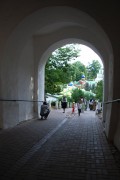Fortress Vladivostok
47 photo with description26.10.2019 08:50
26.10.2019 08:50
Andrey Panevin

Vladivostok Fortress is a network of forts and coastal batteries built in the late XIX - early XX centuries, once formidable and one of the most powerful sea fortresses in the world.
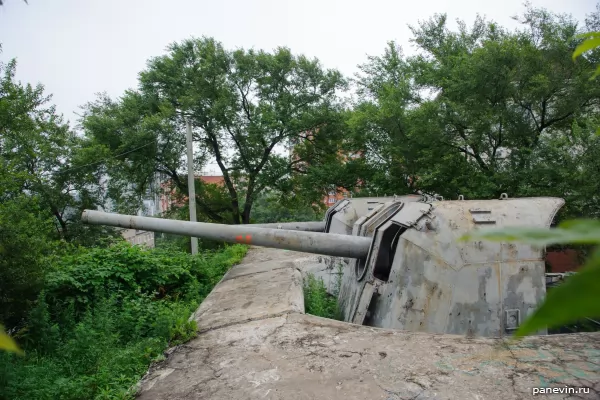 Battery number 318, "Minesweeper" on the hill of the same name.
Battery number 318, "Minesweeper" on the hill of the same name.
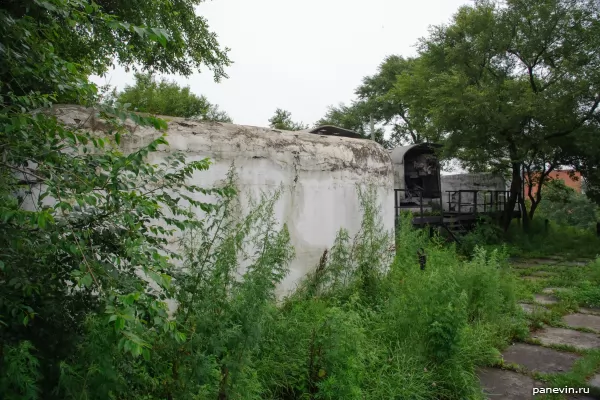
The gun block on two 57-mm coastal guns of Nordenfeld. The battery was built in 1894, rebuilt in concrete in 1990 .
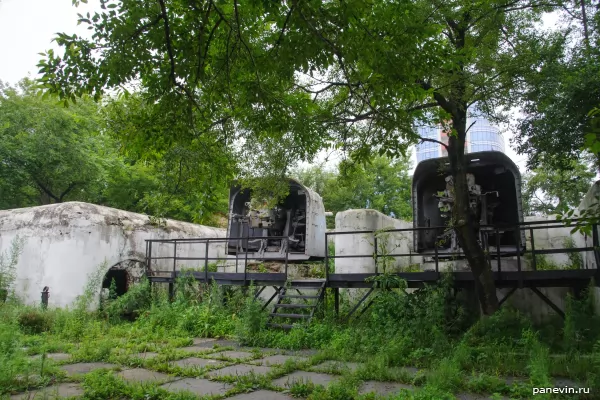
Two 130-mm naval guns B-13-3s post-war series.
On Russky Island on the Zhitkov Peninsula, next to the Primorsky Aquarium, there is a coastal battery No. XIII (No. 373). The battery was built in 1911-1913 according to the project of the military engineer F. D. Shabanov, it included 4 10-inch guns, 30 casemates, an under-gallery gallery and a barracks.
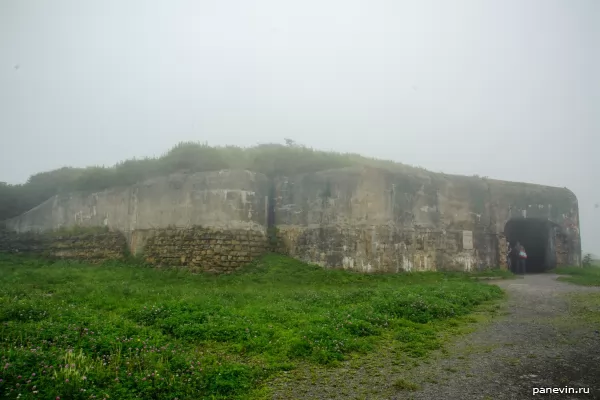
General types of batteries.
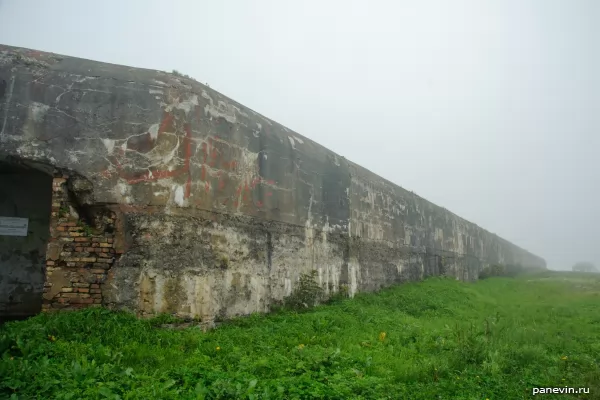

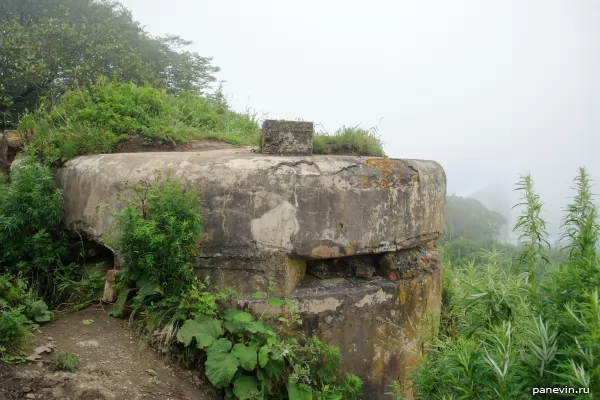
Fire control cabin
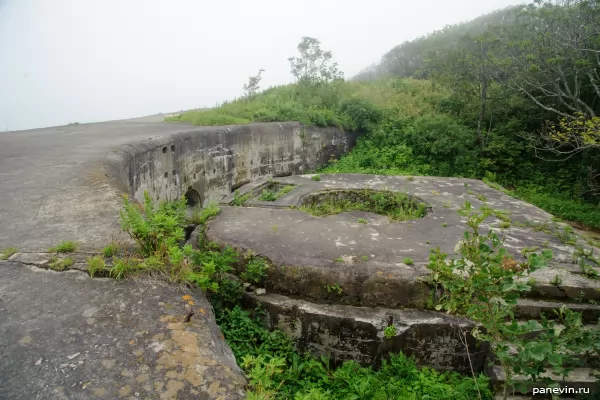
Gun heel
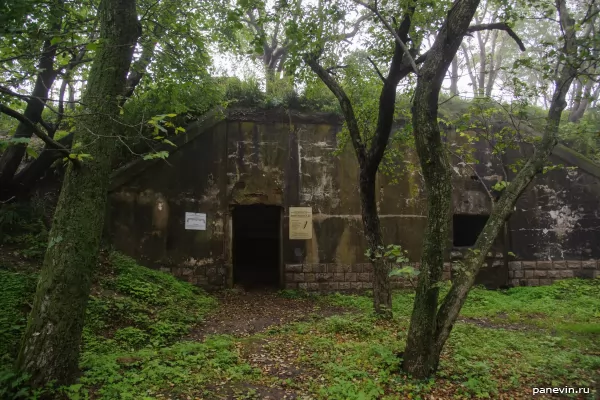
I did not have a flashlight with me, but without it there is nothing to do inside. Well, for the sake of the photo, you need an external flash, which I didn’t intentionally carry across the country.
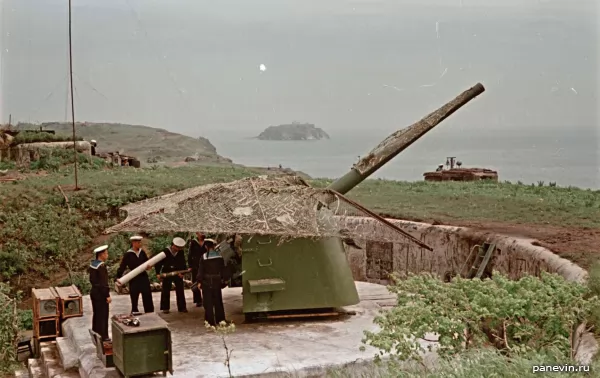
In Soviet times, a battery of the Vladivostok coastal defense sector No. 922 was placed at its position (designed for four 152-mm Kane guns, later replaced with four 130-mm B-13 guns - these are exactly the guns in the photo).
Fort Pospelova :
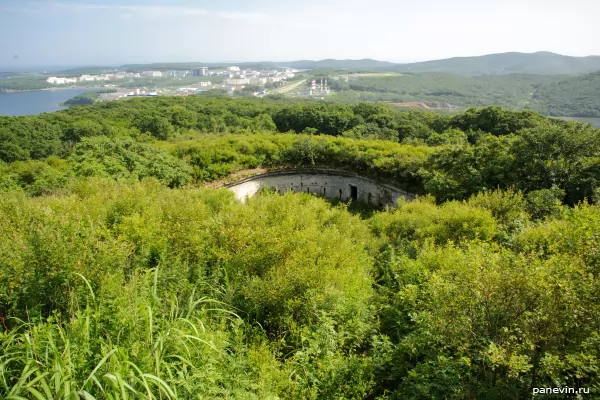
The fort is located on Russky Island on Pospelova Mountain.
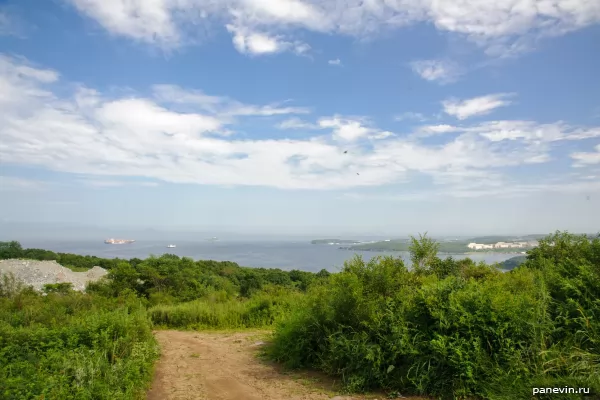
View of Ajax bay from Pospelova Mountain.
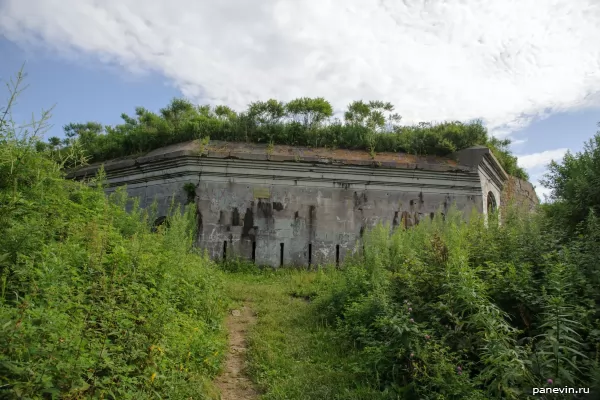
The author of the detailed project and the builder of the fort is military engineer Captain Gnuchev.
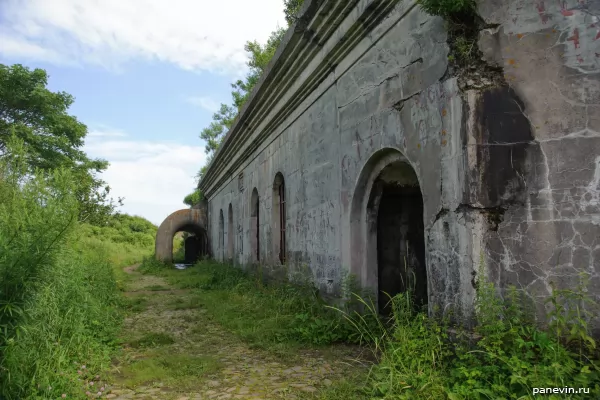
It was built in 1901 - 1903, was completed in 1904 .

The fort was designed for ten 9-pound (107-mm) guns and two machine guns on the fortress machines. In addition, two 9-pound guns were embedded in the embrasures of the wardrobe trunk.
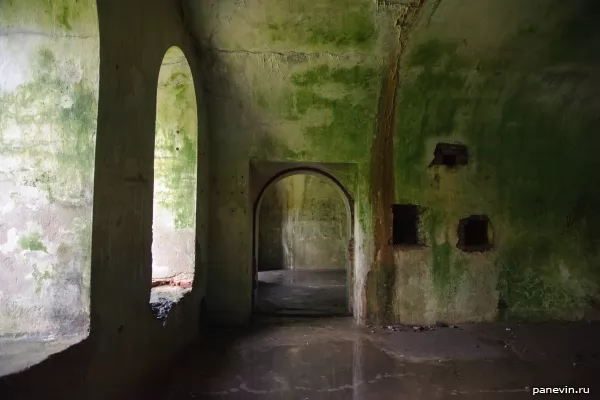
The fortification is a slightly distorted rhombus, being the only example of the type of “fort of Buinitsky” on about. Russian.

Kyoto for the icon and construction date of the fort.
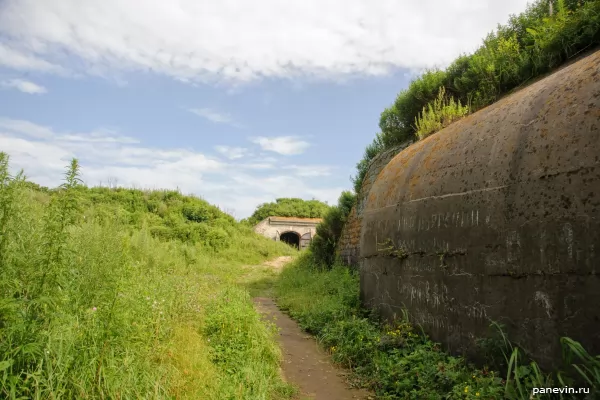
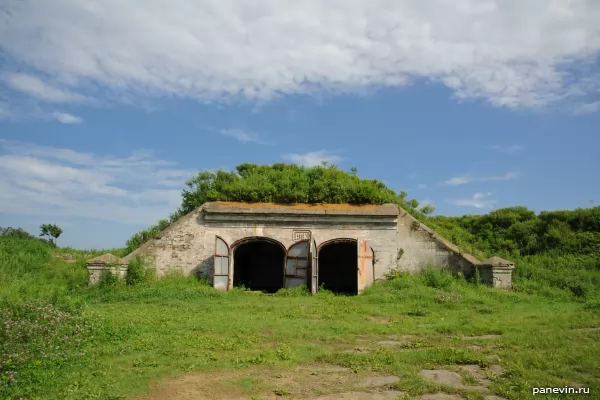
Powder cellar (ammunition depot).
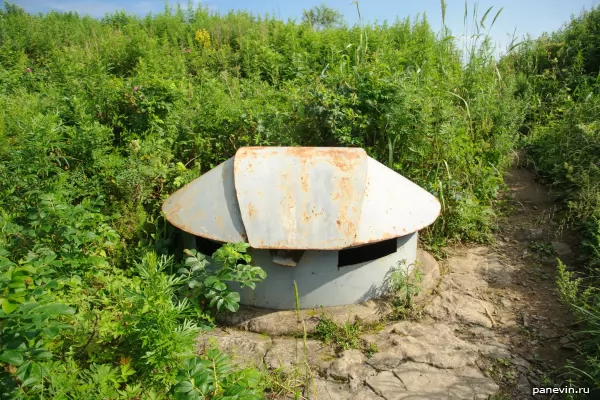
The turret of a rangefinder post.
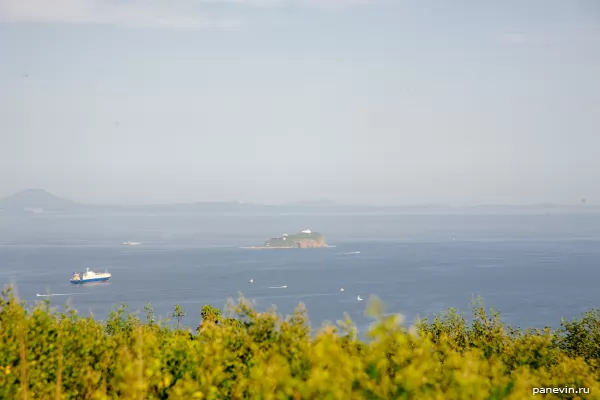
Ajax Bay, in the distance - Skrypleva Island.
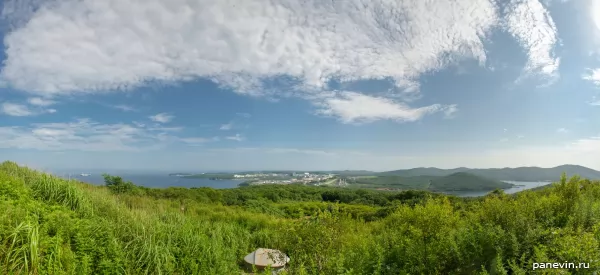
Panorama of Russky Island and Ajax Bay from Pospelova Mountain.
It is a pity I did not know about the megalithic labyrinth nearby - I would definitely have turned it up (I only saw this once - on the Solovetsky Islands ).
You can get by bus from Vladivostok to DFU (Far Eastern Federal University) and walk about 5 kilometers. Coordinates: 43 ° 2'58 "N 131 ° 52'53" E.
Also on the Russian island is the battery " Pospelovskaya " (No. 376).
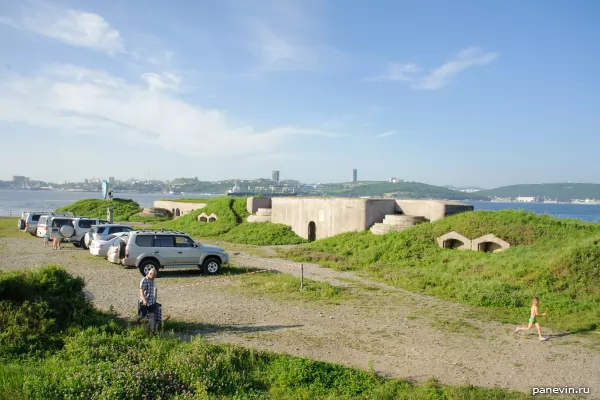
Battery "Pospelovskaya" on the cape of the same name Russian island.
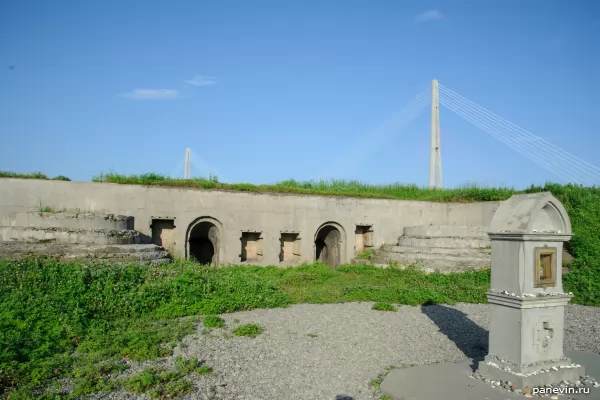
The Kyoto pillar is a remake that repeats the present, found nearby during the battery improvement work, which was carried out on the eve of the APEC summit ( 2012 ).

Cape Pospelovsky (Saperny Peninsula), view of the Russian Bridge and the Eastern Bosphorus.
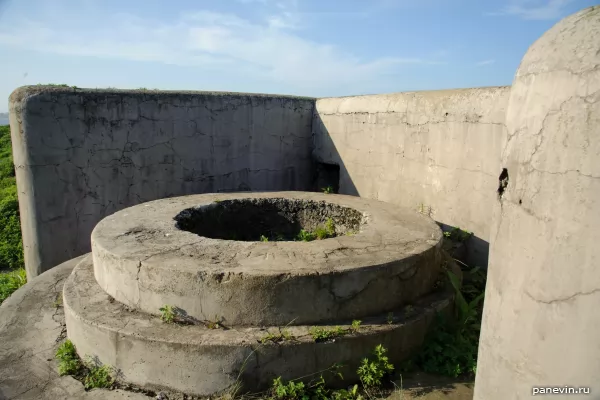
The base of the gun. The construction of the Nordenfeld quick-firing cannon battery (57-mm caliber) under the supervision of military engineer E.O. Maak was begun in 1898 . Basically it was ready in 1899, completely finished in 1901 .
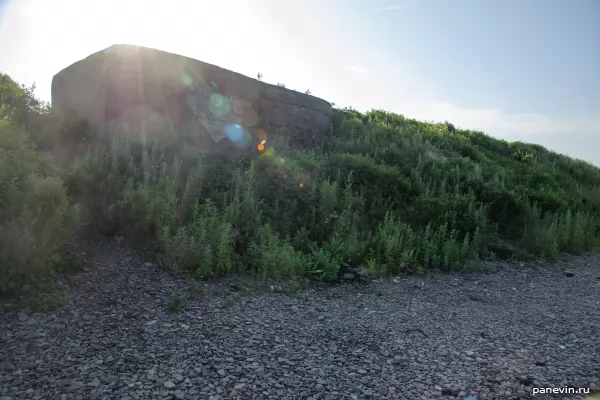
On the bay side, the battery is further protected by an earthen mound.
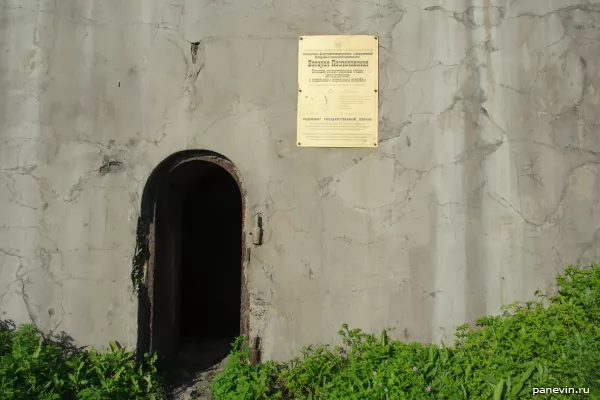
Entrance to the powder magazine.
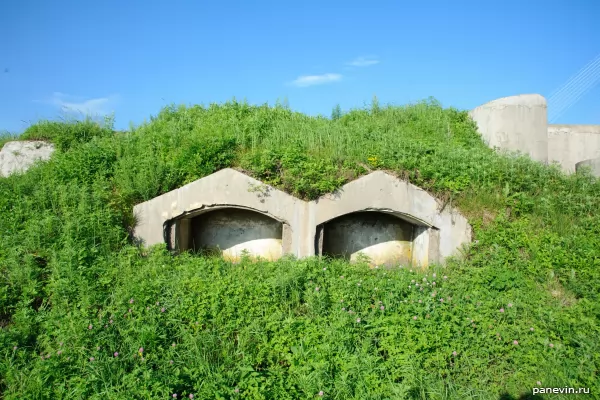
Earth traverse.
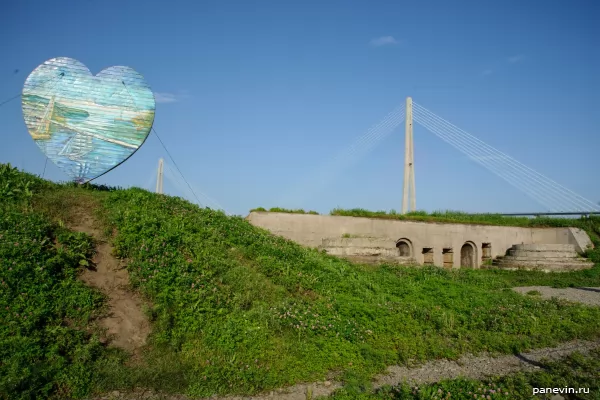
The battery consisted of two two-gun batteries, only the right one was restored.
Next to the Pospelovskaya battery on Russky Island is another coastal battery of rapid-firing guns - Novosiltsevskaya.
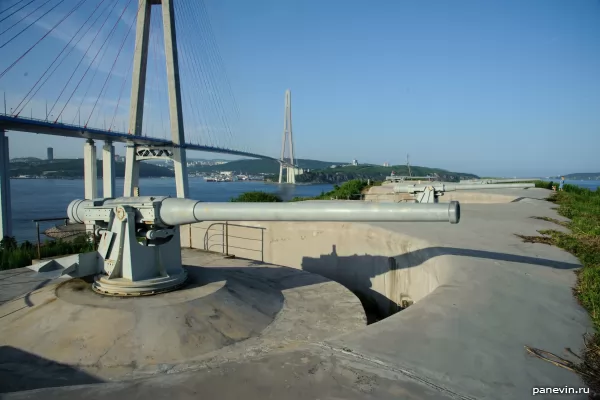
The guns of the Novosiltsevsky battery .
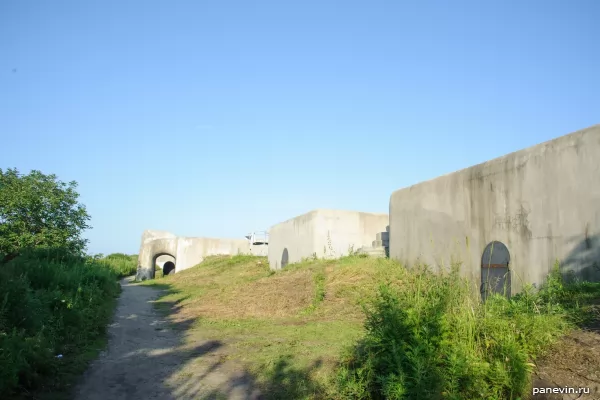
The battery was built from 1899 to 1903 under the leadership of the military engineer Ernst Oskarovich Maak (the same engineer as the one who built the neighboring Pospelovsky battery).
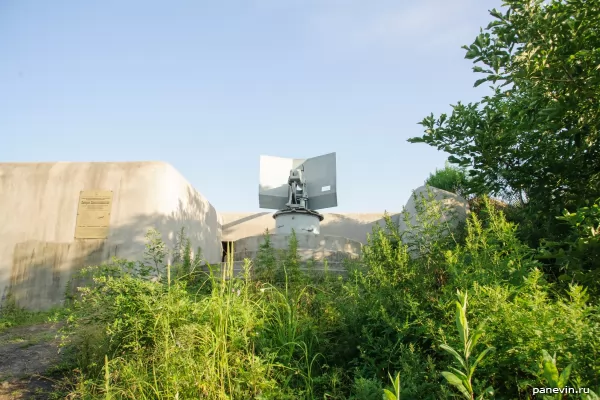
During the restoration of 2011 - 2012, mock-ups were installed on the gun sites.
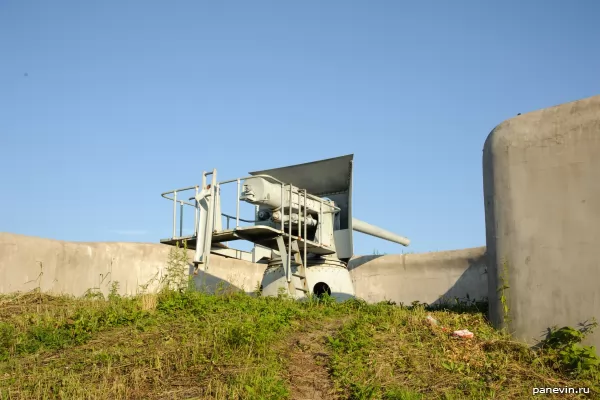
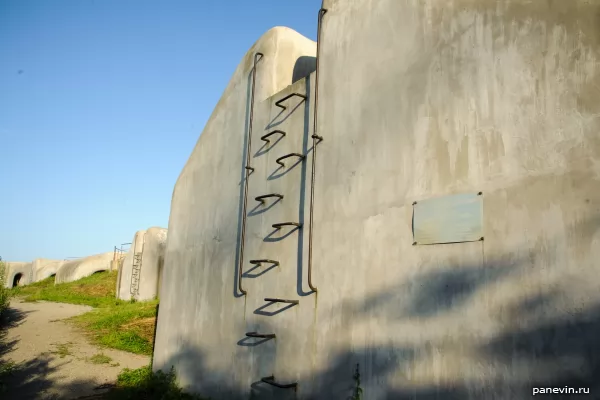
The battery has been perfectly restored, however, access to it is only possible by car.
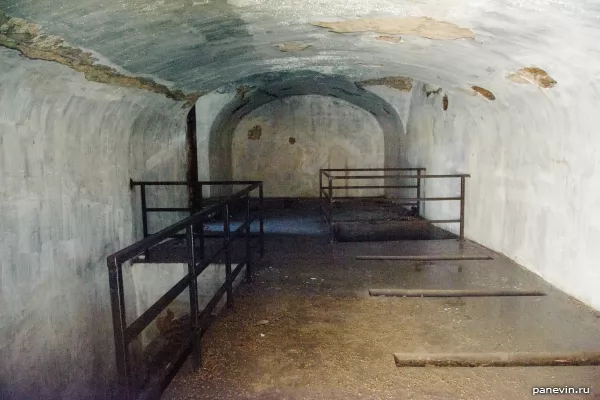
Powder Cellar.
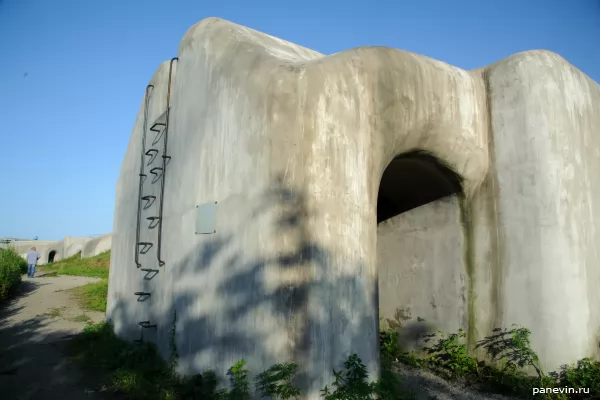
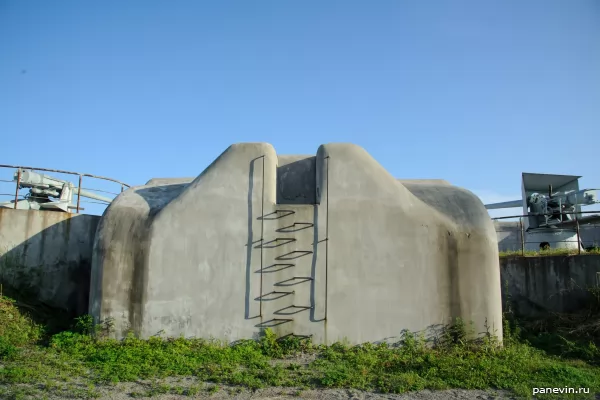
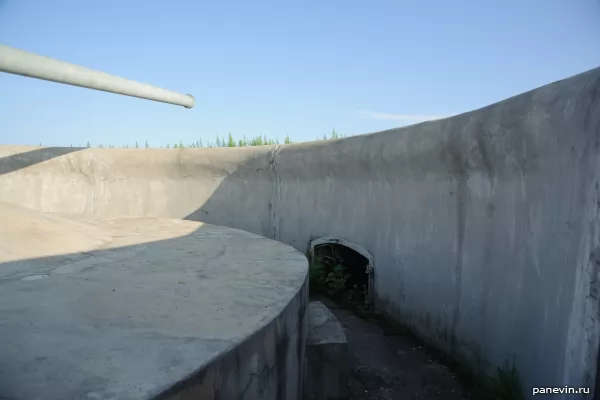
Ammunition supply hatch.
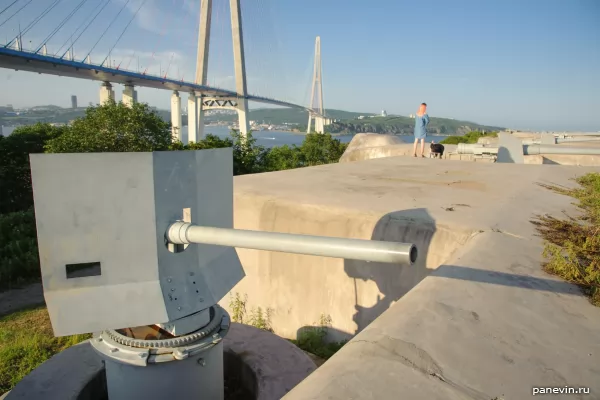
The battery was designed for six six-inch guns and two 57-mm coastal guns.

Ajax bay view from battery.
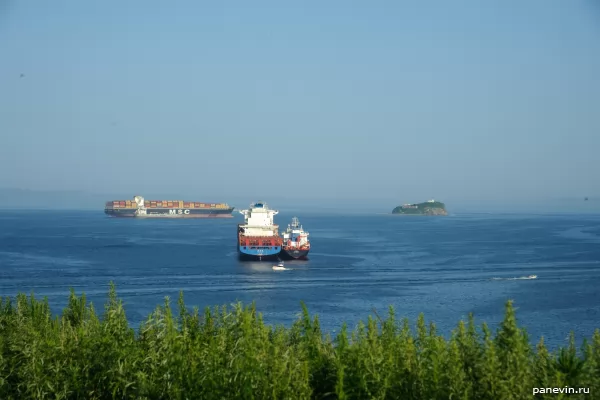
The poetic names of the bays of Vladivostok are according to the first ships that came to these places.
In the north of Vladivostok, several forts of the once formidable Vladivostok fortress have survived, the most powerful and advanced fort of the Main line of defense - Fort Suvorov .
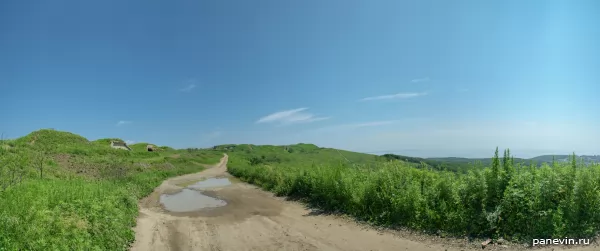
Panorama on the way to the fort.
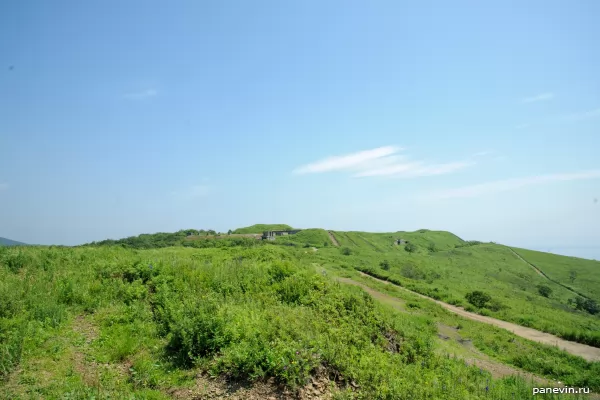
The fort is located on Mount Suvorov - 192 m in the area of the car market "Green Corner".
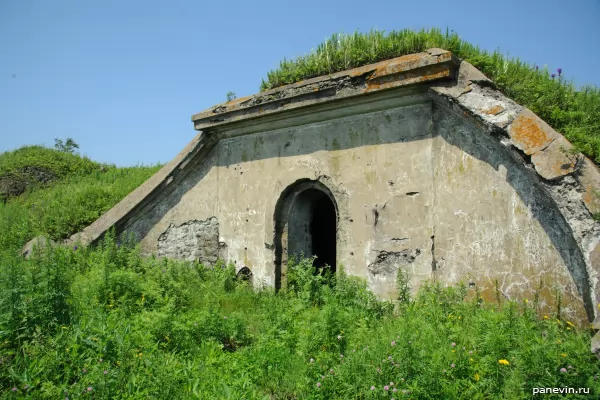
Powder Cellar.

The only drawback of the fort was the lack of pots connecting its wardrobe trunks with the courtyard.
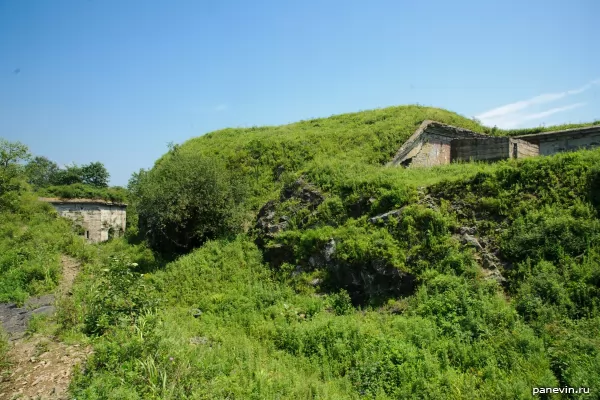
Fort project - K. I. Velichko, author of the detailed project and fort builder - military engineer captain AM Novitsky. It was built in 1899 - 1904 . It was originally called Fort No. IV, after the abolition of the forts “North” and “Northeast”, it became known as Fort No. II. August 30, 1903 received the name "Fort of Prince Suvorov."
In the 30-50s of the XX century, the fort was rebuilt and adapted to the command post, used by parts of the coastal (CP KP), and then the air defense (CP kPVO).
There is a lot of interesting fortification in Vladivostok, to get everything around you need at least a month and it is desirable to have a car, with an SUV. So, dear lovers of fortification, welcome to Vladivostok! It is a pity that I had only 5 days in the capital of Primorye, so the review is very superficial.
What is surprising - the most powerful naval fortress in the world did not fire a single combat shot. The fortress had about fifty coastal batteries, sixteen forts, dozens of coastal caponiers and half-caponiers, many strongholds and land batteries. At the main forts, seven tunnel and one casemated barracks, more than three kilometers of under-galleries and six kilometers of tunnel passages were erected to protect against artillery fire. The fortress was built taking into account the siege of Port Arthur and, unlike most naval fortresses, had good defense from land. Due to the ban on having more than two cruisers in the Pacific Ocean (following a peace treaty with Japan after the Russo-Japanese War of 1905), it is difficult to overestimate the importance of the fortress and it is believed that Japan did not attack the USSR due to the impregnable Vladivostok fortress.
Most of the structures of the fortress were not typical, but were designed and built taking into account the terrain, which further strengthened the defenses.
By direct order of the Darkest, the objects of the Vladivostok fortress were recognized as objects of cultural heritage and architectural monuments, and then the cunning Cossacks of the fictitious "Ussuri Cossack Army" tried to take the forts to their hands, and the looters sawed the guns for metal.
 Battery number 318, "Minesweeper" on the hill of the same name.
Battery number 318, "Minesweeper" on the hill of the same name.

The gun block on two 57-mm coastal guns of Nordenfeld. The battery was built in 1894, rebuilt in concrete in 1990 .

Two 130-mm naval guns B-13-3s post-war series.
On Russky Island on the Zhitkov Peninsula, next to the Primorsky Aquarium, there is a coastal battery No. XIII (No. 373). The battery was built in 1911-1913 according to the project of the military engineer F. D. Shabanov, it included 4 10-inch guns, 30 casemates, an under-gallery gallery and a barracks.

General types of batteries.



Fire control cabin

Gun heel

I did not have a flashlight with me, but without it there is nothing to do inside. Well, for the sake of the photo, you need an external flash, which I didn’t intentionally carry across the country.

In Soviet times, a battery of the Vladivostok coastal defense sector No. 922 was placed at its position (designed for four 152-mm Kane guns, later replaced with four 130-mm B-13 guns - these are exactly the guns in the photo).
Fort Pospelova :

The fort is located on Russky Island on Pospelova Mountain.

View of Ajax bay from Pospelova Mountain.

The author of the detailed project and the builder of the fort is military engineer Captain Gnuchev.

It was built in 1901 - 1903, was completed in 1904 .

The fort was designed for ten 9-pound (107-mm) guns and two machine guns on the fortress machines. In addition, two 9-pound guns were embedded in the embrasures of the wardrobe trunk.

The fortification is a slightly distorted rhombus, being the only example of the type of “fort of Buinitsky” on about. Russian.

Kyoto for the icon and construction date of the fort.


Powder cellar (ammunition depot).

The turret of a rangefinder post.

Ajax Bay, in the distance - Skrypleva Island.

Panorama of Russky Island and Ajax Bay from Pospelova Mountain.
It is a pity I did not know about the megalithic labyrinth nearby - I would definitely have turned it up (I only saw this once - on the Solovetsky Islands ).
You can get by bus from Vladivostok to DFU (Far Eastern Federal University) and walk about 5 kilometers. Coordinates: 43 ° 2'58 "N 131 ° 52'53" E.
Also on the Russian island is the battery " Pospelovskaya " (No. 376).

Battery "Pospelovskaya" on the cape of the same name Russian island.

The Kyoto pillar is a remake that repeats the present, found nearby during the battery improvement work, which was carried out on the eve of the APEC summit ( 2012 ).

Cape Pospelovsky (Saperny Peninsula), view of the Russian Bridge and the Eastern Bosphorus.

The base of the gun. The construction of the Nordenfeld quick-firing cannon battery (57-mm caliber) under the supervision of military engineer E.O. Maak was begun in 1898 . Basically it was ready in 1899, completely finished in 1901 .

On the bay side, the battery is further protected by an earthen mound.

Entrance to the powder magazine.

Earth traverse.

The battery consisted of two two-gun batteries, only the right one was restored.
Next to the Pospelovskaya battery on Russky Island is another coastal battery of rapid-firing guns - Novosiltsevskaya.

The guns of the Novosiltsevsky battery .

The battery was built from 1899 to 1903 under the leadership of the military engineer Ernst Oskarovich Maak (the same engineer as the one who built the neighboring Pospelovsky battery).

During the restoration of 2011 - 2012, mock-ups were installed on the gun sites.


The battery has been perfectly restored, however, access to it is only possible by car.

Powder Cellar.



Ammunition supply hatch.

The battery was designed for six six-inch guns and two 57-mm coastal guns.

Ajax bay view from battery.

The poetic names of the bays of Vladivostok are according to the first ships that came to these places.
In the north of Vladivostok, several forts of the once formidable Vladivostok fortress have survived, the most powerful and advanced fort of the Main line of defense - Fort Suvorov .

Panorama on the way to the fort.

The fort is located on Mount Suvorov - 192 m in the area of the car market "Green Corner".

Powder Cellar.

The only drawback of the fort was the lack of pots connecting its wardrobe trunks with the courtyard.

Fort project - K. I. Velichko, author of the detailed project and fort builder - military engineer captain AM Novitsky. It was built in 1899 - 1904 . It was originally called Fort No. IV, after the abolition of the forts “North” and “Northeast”, it became known as Fort No. II. August 30, 1903 received the name "Fort of Prince Suvorov."
In the 30-50s of the XX century, the fort was rebuilt and adapted to the command post, used by parts of the coastal (CP KP), and then the air defense (CP kPVO).
There is a lot of interesting fortification in Vladivostok, to get everything around you need at least a month and it is desirable to have a car, with an SUV. So, dear lovers of fortification, welcome to Vladivostok! It is a pity that I had only 5 days in the capital of Primorye, so the review is very superficial.
What is surprising - the most powerful naval fortress in the world did not fire a single combat shot. The fortress had about fifty coastal batteries, sixteen forts, dozens of coastal caponiers and half-caponiers, many strongholds and land batteries. At the main forts, seven tunnel and one casemated barracks, more than three kilometers of under-galleries and six kilometers of tunnel passages were erected to protect against artillery fire. The fortress was built taking into account the siege of Port Arthur and, unlike most naval fortresses, had good defense from land. Due to the ban on having more than two cruisers in the Pacific Ocean (following a peace treaty with Japan after the Russo-Japanese War of 1905), it is difficult to overestimate the importance of the fortress and it is believed that Japan did not attack the USSR due to the impregnable Vladivostok fortress.
Most of the structures of the fortress were not typical, but were designed and built taking into account the terrain, which further strengthened the defenses.
By direct order of the Darkest, the objects of the Vladivostok fortress were recognized as objects of cultural heritage and architectural monuments, and then the cunning Cossacks of the fictitious "Ussuri Cossack Army" tried to take the forts to their hands, and the looters sawed the guns for metal.
Share:
Themes: attractions 134 fortification 35 fortresses 25 photos 417 travel 286 Vladivostok 10
← Blog
krepost_vladivostok
blog
